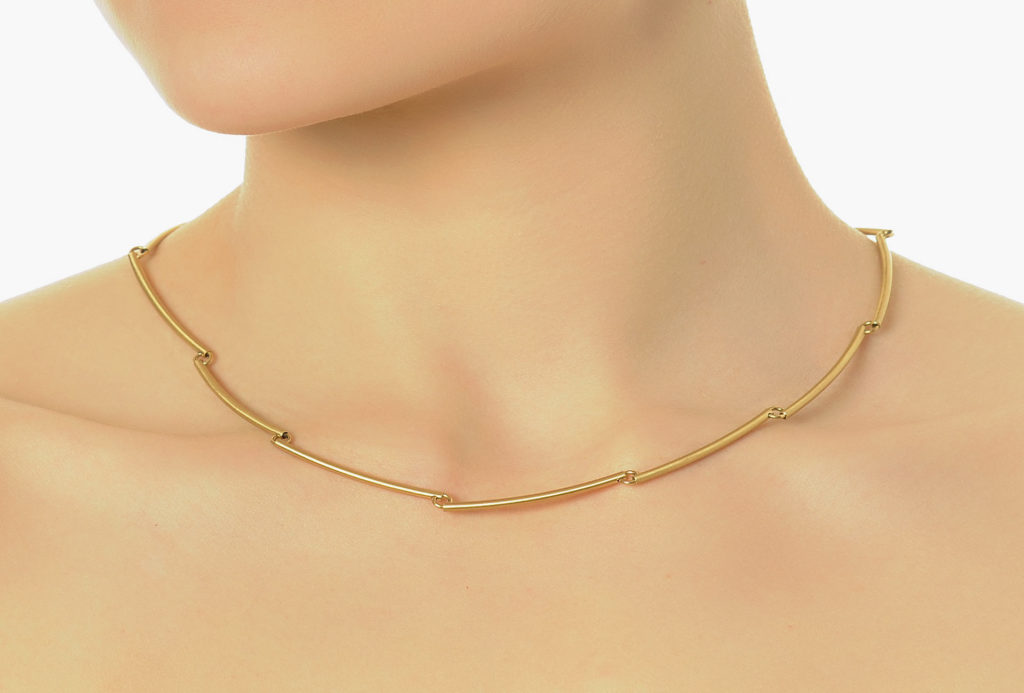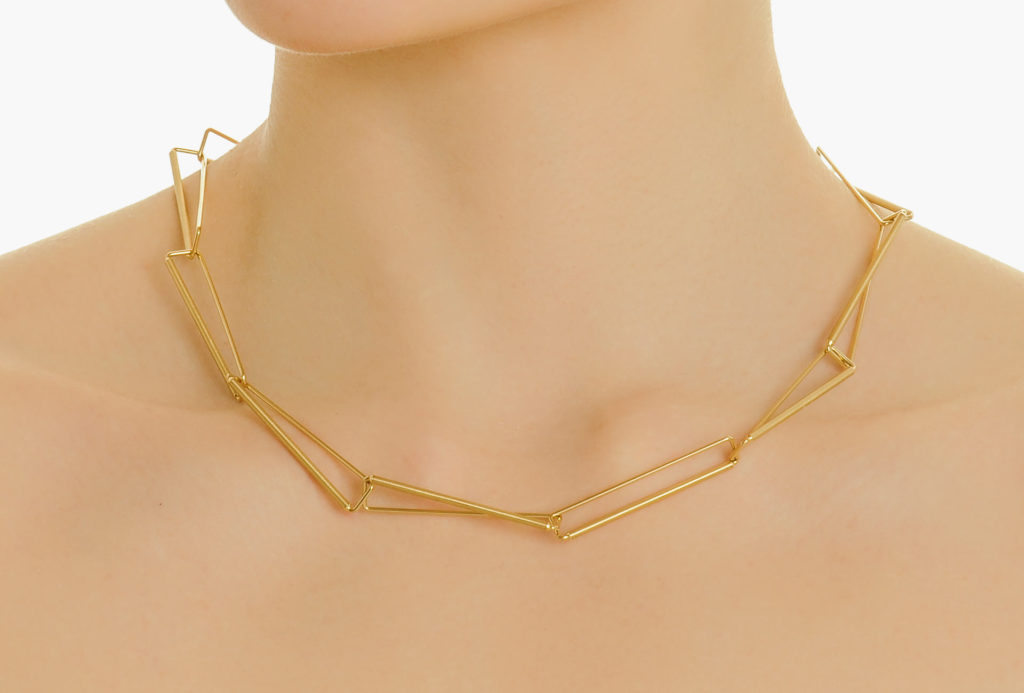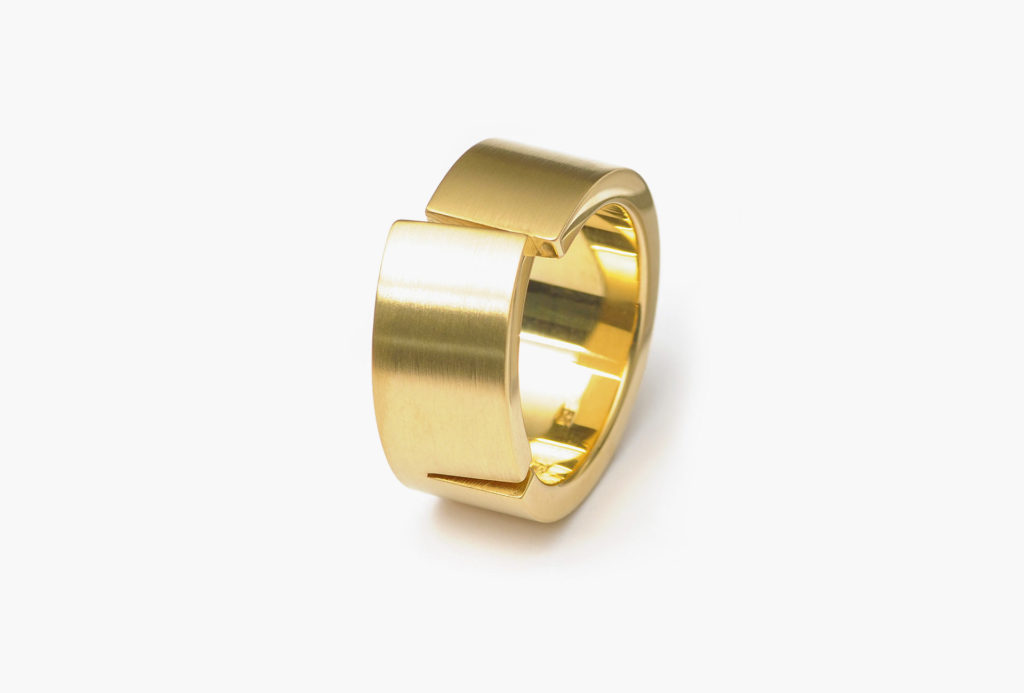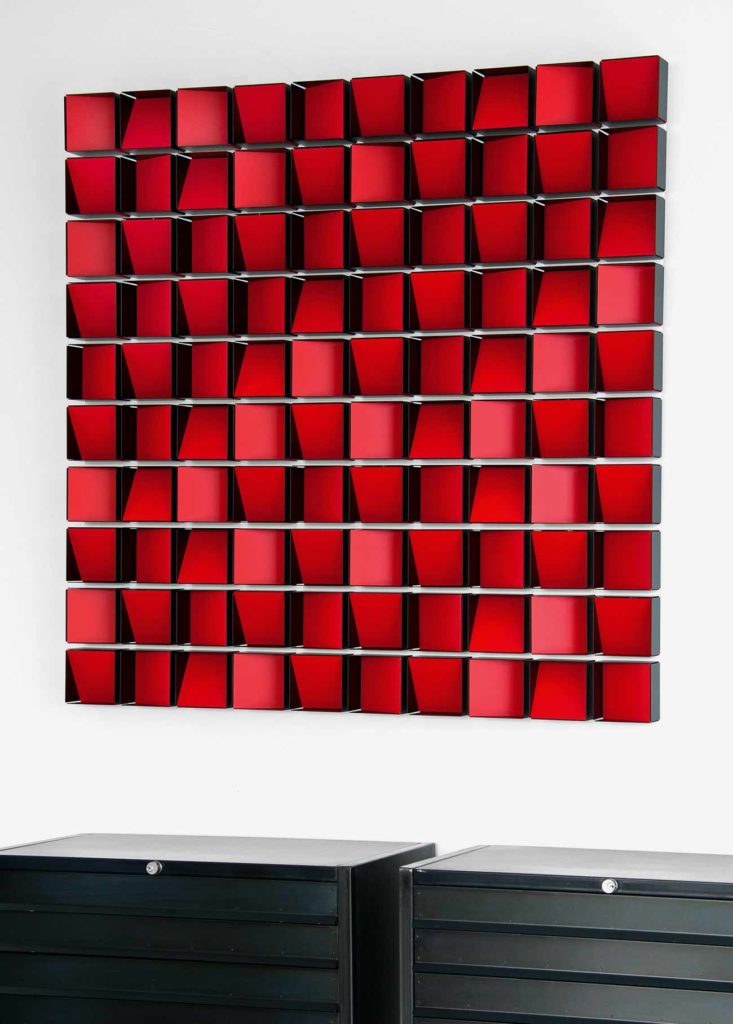With his minimalist formal language, the designer and artist Carl Dau, who was born in 1942, has decisively influenced jewelry culture in Germany since the 1980s. Dau will be exhibiting works of jewelry, as well as six wall objects, from Monday, September 2 to Thursday, October 31, 2019. In his foreword to the accompanying catalogue, Rudolf Peter Scheben, Managing Director of the German-language Niessing Stores, writes: “I cannot imagine a more suitable and multifaceted artist than Carl Dau for this first major exhibition on our new premises. Among other things, Carl Dau is a sailor, an entrepreneur, a goldsmith, a Berliner and a creator of wonderful objects.”

Carl Dau, minimalist necklace with gentle arcs. 750 gold; from 2,180 euros.

Ring by Carl Dau. Simple yet exciting. 750 gold; from 2,120 euros.

Simplicity and expansive constructivism. Chain with double bars. 750 gold; from 3,190 euros.

With rings and pieces of jewelry of this kind, Carl Dau became the pioneer of a minimalist design language in contemporary jewelry design. 750 gold; from 3,380 euros.
Works from the Carl Dau manufactory will also be on display from September 12, 2019 to October 19, 2019 in a large exhibition marking the 40thanniversary of the Hilde Leiss Gallery in Hamburg, where they’ll be shown along with pieces by other designers. In this interview, Carl Dau explains how his jewelry has changed in recent years and comments on the current situation jewelry culture and its possible future.
Art Aurea What are you currently working on and what is important to you?
Carl Dau My chains were always clearly structured and their design readily comprehensible. Lately we’ve been recombining familiar shapes in surprising new ways. Also new is our stronger focus on gold, which augments our well-known stainless steel items. Finer workmanship and more delicate shapes make these chains look much more feminine.
Rings have always appealed to me. It’s not the complicated ones that cause difficulties, but the seemingly simple and straightforward pieces: they’re utterly unforgiving. Every mistake, every formal or technical imperfection is instantly evident. But this is precisely why I’m attracted to working on them.
Art Aurea In your opinion, how has consumer behavior changed in the jewelry and luxury sector?
Carl Dau Jewelry has lost its status as a status symbol even more than cars. In my opinion, there are only three reasons to wear jewelry: as a gift from a loved one; as a statement about an attitude toward life, but then mostly without emphasizing the value of the material; and as a playful way to show that one belongs to a particular group, as can be seen when wearing bracelets, for example. Luxury still exists, but it has shifted to other areas: to travel, to home living (which has involuntarily become a costly luxury for many people today) and to more frequent purchases of clothing and interiors.
Art Aurea How do you view jewelry culture now and in the future?
Carl Dau I’m rather pessimistic. Pforzheim’s jewelry industry has largely disappeared because purchases of European-made jewelry have been declining for many years. In the design scene too, the ranks are narrowing or there’s a lack of young talent of a high standard. This is most obvious at trade fairs such as Inhorgenta. Studios that show their own line of serially fabricated jewelry are disappearing at an increasingly fast pace. However, there are more and more “lone wolves” making pieces of jewelry d’auteur that appeal to people who live individualistically and consciously.
I see a certain future for jewelers in alterations and repairs, similar to gents’ tailors, who showed us how this can be possible. In addition, small individual goldsmiths are proliferating like mushrooms after a rain, but they mostly offer interchangeably similar rings and pendants with cabochons. They too won’t be able to hold their own if they don’t find their own formal niche and thus clearly set themselves apart from bigger competitors. Small companies like us will disappear, with a few exceptions, because we have little to offer to counter the changed buying behavior. Furthermore, there are the high wage and rental costs, coupled with strong competitive pressure from the Far East and Amazon. So: the future doesn’t look bright! But there will always be “lone wolves” who’ll refute my pessimism – and that’s a very good thing!

Jewelry miniatures, stainless steel and lacquer, 6 x 3.2 cm, 550 euros each.

Wall object, steel and lacquer, 120 x 120 cm. 16,500 euros.
- —
-
Niessing Berlin
Schlüterstraße 39
10629 Berlin
Germany - Vernissage: Friday, 30.08.2019, 7 p.m.
- Link